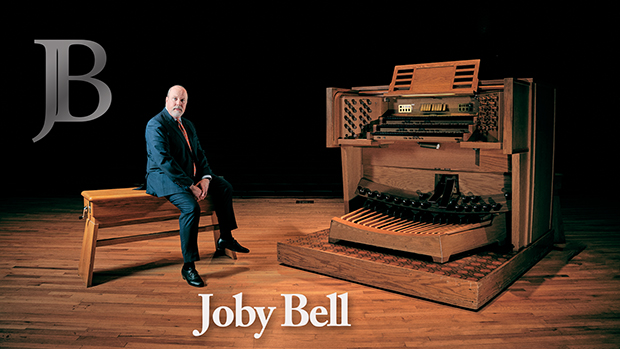on Richard Forrest Woods – Part 16
 Sunday, July 27, 2025 at 12:51PM
Sunday, July 27, 2025 at 12:51PM
This is one of many installments of a biography of mentor and friend Dick Woods, organist/choirmaster at the Church of St. John the Divine, Houston. See here for the entire series.
*******************
The funeral
Mr. Bob Jones, then president of Geo. H. Lewis & Sons Funeral Directors, was a dear friend of Dick’s, and he stood ready to assist when the inevitable occurred. I thank him, God rest his soul, for that service in friendship. Aside: Over the years, Bob also spearheaded a most welcome practice that nearly all other funeral homes in Houston still follow today – bringing a check to each funeral for the organist.
Dick’s funeral was May 22, 1993, at 1:00 pm at St. John’s. Bishop Sterling celebrated. Rector Larry Hall preached. My teacher Clyde Holloway played the Franck B-Minor Choral for the prelude, after which I added the Bach E-Flat Prelude and Fugue. The hymns were Engelberg, St. Columba, Melita, Down Ampney, and Land of Rest. And the choir completely filled the stalls with current and former members. (How I wished I had been around during the heyday of this choir with Dick.) There were surprisingly few other people in attendance – maybe fifty or so – a final insult, I felt, from a parish of some 4000 members, for a fellow who had served among them for two decades.
The choir sang three anthems at the Offertory: Duruflé Ubi caritas, Mendelssohn ‘He that shall endure,’ and Vaughan Williams ‘O how amiable.’ Even today, I still weep openly upon hearing the Vaughan Williams. For whatever reason, my myriad emotions converged around this piece during this time, and I remember Dick and everything he stood for, every time I hear it. Communion motets were Tallis ‘If ye love me’ and Mozart Ave verum. I recall running out of communicants before we ran out of music, and just as Dick would have done, we ended the music and did not get to the Mozart.
Bishop Benitez (previously the rector) could not attend the funeral and wrote an address of sorts to be read aloud. I was keen to hear what final words he might offer for this fellow he openly admired. To my disappointment, the letter was full of platitudes and clichés. It was all smiles and read like a merry biographical sketch intended for a retirement party. I was deeply disappointed that the bishop didn’t make better use of the opportunity for a Christian teaching moment. There was no mention of the tragedy of this death, no mention of the unnecessary stigma that came with AIDS in those days, no reprimand of this parish or the Church at large – an institution that should have been there for sick people who often unnecessarily lost their dignity and friends and family as well as their lives with this disease, no mention of the HIV learning curve the whole thing put some of us on and should have put everyone on, no call for better education and better treatment of each other. I seem to be the only person who remembers the address at all, and although I can’t recall if it was read aloud or if the bishop had pre-recorded it himself it to be played back at the service, I know I’m not making it up. I have tried to get a copy of it from the archivist at the diocese, but the backlog on the digitization of previous bishops' documents is understandably formidable.
Credit is due Bishop Benitez, however, for his unwavering and demonstrated admiration of Dick from the day they met to the day Dick died. He always called Dick ‘maestro.’ I remember his graciously attending a birthday party for Dick in 1991 and uttering a most sincere prayer to God, some of the words I remember as, “… for your servant Dick … that as his days increase …” The bishop even visited Dick on his death bed at home. Dick’s inner circle has never forgotten that gesture from the bishop nor the absence of the same gesture from the rector and others.
Dick’s ashes were interred in the columbarium at the church. As one enters the gate, his niche is on the left-hand side, in the first bend of the columbarium’s cruciform layout. Dick is interred directly next to Mr. Collis Woods, Sr., a Black gentleman who served St. John’s for decades as sexton. The two of them had arranged to be interred next to each other so that visitors might assume they were brothers. Dick always chuckled like a sly villain whenever he told anyone of those plans. The whole thing is a perfect representation of his wry, sneaky humor, and it is quietly hiding in plain, perpetual sight right there in the church columbarium.
Next time: After the Woods era
 Joby Bell | tagged
Joby Bell | tagged  Richard Forrest Woods
Richard Forrest Woods 